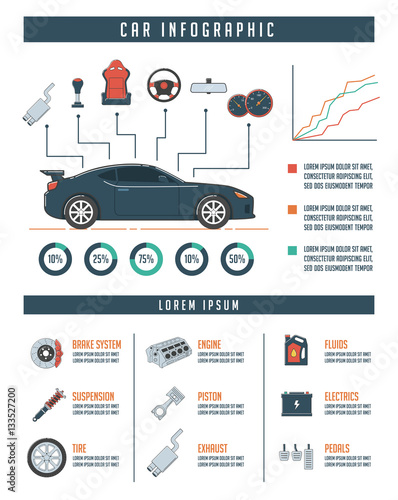Want To Learn More Regarding The Warning Lights On Your Dashboard? Uncover What They Show Regarding Your Car'S Health And Safety
Want To Learn More Regarding The Warning Lights On Your Dashboard? Uncover What They Show Regarding Your Car'S Health And Safety
Blog Article
Web Content By-Faulkner Forbes
When you're behind the wheel, those beautiful caution lights on your control panel can be a bit complicated. Do you recognize what they're attempting to inform you regarding your vehicle's health and wellness? Comprehending the importance of these lights is crucial for your security and the durability of your vehicle. So, the next time one of those lights appears, would not you wish to analyze its message accurately and take the required actions to resolve it?
Common Caution Lights and Interpretations
Identify typical caution lights in your vehicle and recognize their significances to guarantee risk-free driving.
One of the most common caution lights consist of the check engine light, which signals concerns with the engine or exhausts system. If this light begins, it's essential to have your vehicle inspected promptly.
The oil pressure alerting light suggests low oil pressure, requiring instant focus to stop engine damages.
A blinking battery light could suggest a damaged charging system, potentially leaving you stranded otherwise addressed.
The tire pressure surveillance system (TPMS) light notifies you to low tire pressure, influencing automobile stability and gas performance. Overlooking this could lead to hazardous driving conditions.
The abdominal muscle light shows a problem with the anti-lock braking system, endangering your ability to quit swiftly in emergency situations.
Finally, the coolant temperature cautioning light warns of engine getting too hot, which can lead to severe damage if not dealt with swiftly.
Recognizing these typical caution lights will assist you attend to problems without delay and maintain secure driving conditions.
Significance of Prompt Focus
Understanding the typical caution lights in your cars and truck is only the very first step; the value of promptly dealing with these warnings can't be stressed sufficient to ensure your security on the road.
When a caution light illuminates on your control panel, it's your vehicle's method of connecting a prospective problem that needs attention. Overlooking these warnings can cause more extreme troubles later on, jeopardizing your safety and security and possibly costing you extra in repairs.
just click the following document to warning lights can avoid malfunctions and crashes. For instance, a blinking check engine light might show a misfire that, if left neglected, might create damage to the catalytic converter. Addressing this quickly can save you from an expensive repair.
In a similar way, a brake system alerting light could signal low brake fluid or used brake pads, vital components for your safety and security when driving.
Do It Yourself Troubleshooting Tips
If you observe a warning light on your dashboard, there are a couple of do it yourself troubleshooting ideas you can try before seeking specialist aid.
The first step is to consult your vehicle's manual to recognize what the certain caution light indicates. In https://frontbrakesandrotors15049.liberty-blog.com/30052535/curious-regarding-automobile-detailing-supplies-discover-the-must-have-devices-and-expert-guidance-that-will-certainly-raise-your-describing-skills-as-a-beginner can be as simple as a loosened gas cap triggering the check engine light. Tightening up nz detailing might fix the trouble.
One more common concern is a low battery, which can set off different warning lights. Checking the battery links for rust and guaranteeing they're protected may take care of the trouble.
If a caution light lingers, you can try resetting it by separating the car's battery for a couple of minutes and afterwards reconnecting it. Additionally, examining your vehicle's liquid degrees, such as oil, coolant, and brake liquid, can assist repair alerting lights connected to these systems.
Final thought
In conclusion, recognizing your auto's caution lights is important for keeping your vehicle running efficiently and safely. By immediately resolving these signals and knowing what they imply, you can prevent expensive fixings and prospective malfunctions.
Keep in mind to consult your cars and truck's manual for specific information on each warning light and do something about it as necessary to make sure a trouble-free driving experience.
Remain notified, stay risk-free on the road!
